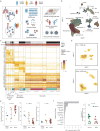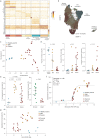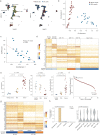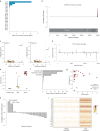Deciphering the state of immune silence in fatal COVID-19 patients
- PMID: 33674591
- PMCID: PMC7935849
- DOI: 10.1038/s41467-021-21702-6
Deciphering the state of immune silence in fatal COVID-19 patients
Abstract
Since the beginning of the SARS-CoV-2 pandemic, COVID-19 appeared as a unique disease with unconventional tissue and systemic immune features. Here we show a COVID-19 immune signature associated with severity by integrating single-cell RNA-seq analysis from blood samples and broncho-alveolar lavage fluids with clinical, immunological and functional ex vivo data. This signature is characterized by lung accumulation of naïve lymphoid cells associated with a systemic expansion and activation of myeloid cells. Myeloid-driven immune suppression is a hallmark of COVID-19 evolution, highlighting arginase-1 expression with immune regulatory features of monocytes. Monocyte-dependent and neutrophil-dependent immune suppression loss is associated with fatal clinical outcome in severe patients. Additionally, our analysis shows a lung CXCR6+ effector memory T cell subset is associated with better prognosis in patients with severe COVID-19. In summary, COVID-19-induced myeloid dysregulation and lymphoid impairment establish a condition of 'immune silence' in patients with critical COVID-19.
Conflict of interest statement
The authors declare no competing interests.
Figures




References
-
- Lavezzo E. et al. Suppression of a SARS-CoV-2 outbreak in the Italian municipality of Vo’. Nature584, 425–429 (2020). - PubMed
Publication types
MeSH terms
Substances
Grants and funding
LinkOut - more resources
Full Text Sources
Other Literature Sources
Medical
Molecular Biology Databases
Research Materials
Miscellaneous

